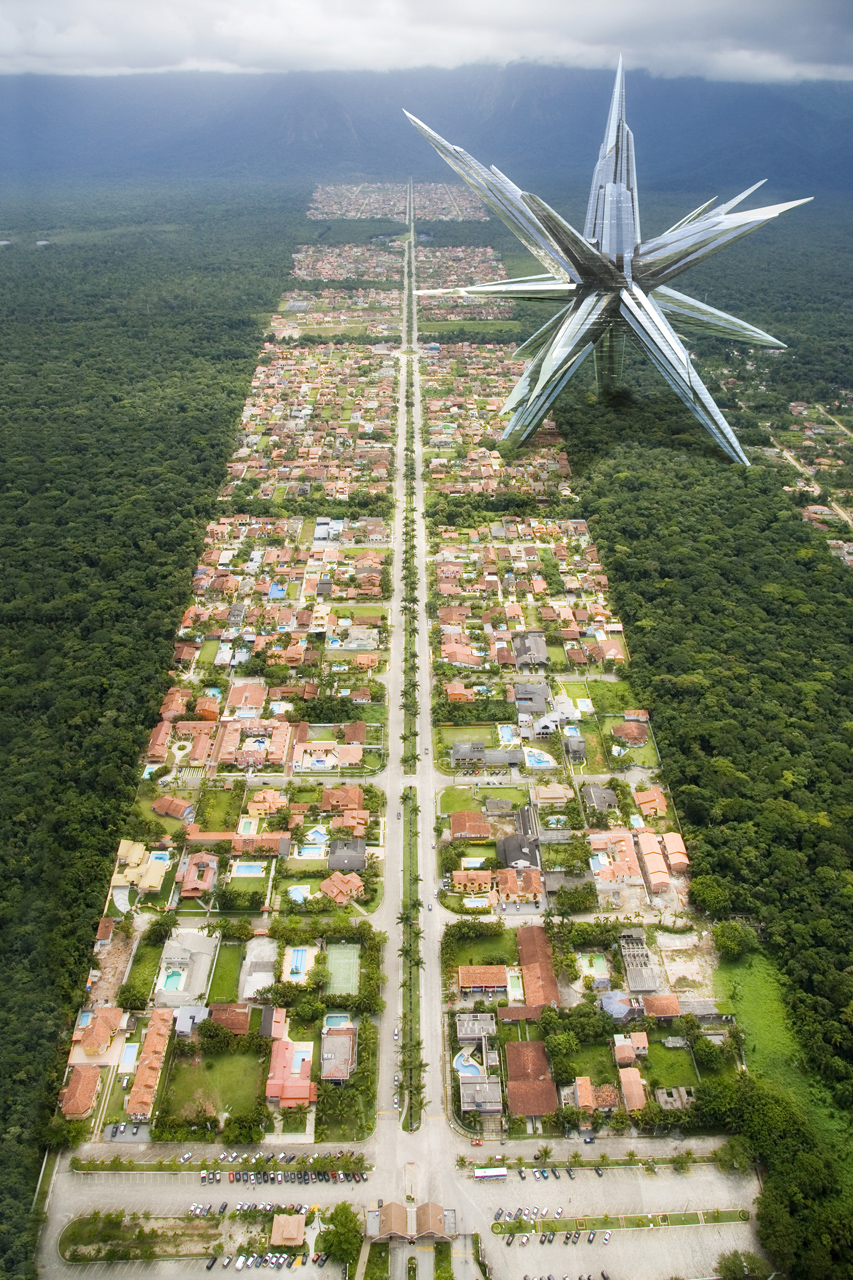728x90








I think so. The ‘Superstar’ is a design for a different kind of China Town, one that would be more in tune with the rapidly progressing China of today. The project comes from an architecture firm whose office was located closely to the past ? successful ? Olympics. They are Beijing, they are MAD.
In their statement the architects of MAD write that the design is a response the current China Towns all over the world, which all look similar to each other, “along with shopping malls, petrol stations and branches of McDonalds”. To put an end to the “historical theme parks” MAD suggests a “shock therapy.”
Somehow though the attack on the “fake” China Town has ended up looking like an attack on the city. Or a savior of the city, if you look at it the other way around. The mummified European cities will once again thrive with life, infused by generations of ‘Superstar’ buildings.
Beginning with Rome. A city in which policy makers regard a Richard Meier building as too progressive among the Roman ruins. The newly build exhibition space by Meier is on thread to be destroyed. For the Biennale in Venice twelve young architects were asked to draw an intervention for an anonymous suburban neighborhood in the city. MAD suggests the Superstar.
With a height of a couple hundred meters the Superstar towers over the city. It barely touches the ground though. A couple of cable car connections provide additional passageways to the host city. The Superstar doesn’t really need the surrounding city, as it is “self-sustaining: it grows its own food, […] recycles it own waste. […] it’s a living place, with authentic Chinese nature, health resorts, sports facilities and drinking water lakes. There is even a digital cemetery.” In other words: it’s an ecosystem in miniature form. A ‘Bonsai’ earth.
The Superstar contains 15.000 Chinese and can be deployed in any corner of the world. Its purpose? “Exchanging the new Chinese energy with the environment where it stays.” In the eyes of the architects the Superstar is mobile too. When its job is done, it simply moves on.
‘Is it friendly?’, inhabitants of the host cities will ask themselves. The iconography of the design doesn’t help much: is it a ninja star, a hedgehog, an anti-boat mine, a cactus or an alien aircraft?
These are however only secondary references. The upfront iconography is that of a star: a shining star from the universe. Or: a snow star, a crystallized snowflake. Both are highly virtuous references. So in the end we could honestly call the Superstar ‘beautiful’. It is.
Note that in Christian eyes it looks like giant Christmas star. With the Superstar it would be Christmas all year long.
A good friend of me compared the Superstar with the designs of Boullee. I really like that. It has the same condensed, centralized monumentality. The reference to Boullee also nicely places the design in a historical perspective. It fits in a tradition.
In the end the design ? in my view - also poses a couple of unanswerable questions. First: The traditional China Town is a highly recognizable place. It maybe represents China as an old-fashioned civilization, but nonetheless. How does the image of the ‘star’ represent China? Is China the shining beacon? Our light in the dark? Secondly: The Superstar presents an hermetic, autonomous world. As an image, does that say anything about China?
그리드형
'REF. > Architecture' 카테고리의 다른 글
| [ Vitruvius ] Barcode (0) | 2008.10.03 |
|---|---|
| [ RA Studija ] Banknote (0) | 2008.10.03 |
| [ J. MAYER H ] dupli.casa (0) | 2008.10.02 |
| [ UNStudio ] Louis Vuitton (0) | 2008.10.02 |
| [ Triptyque ] Loducca Agency (0) | 2008.10.02 |